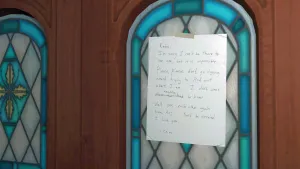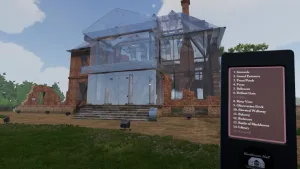Exploring the World of Walking Simulators: Using Games as Narrative Text
Welcome to another edition of the TESOL Games and Learning Blog. In this month’s blog, I wanted to dive into the genre of video games commonly referred to as “walking simulators.” These games are first-person narrative games that task players with exploring the clues to a mystery or event after the fact. These games forgo typical video game activities, such as fighting, crafting, or racing in favor of the player exploring an environment to solve a puzzle. In many ways, these games are more akin to short stories or novellas and can be used in classroom practice in much the same way.
One of the more invigorating aspects of walking simulator games is the focus on a more diverse array of stories and ideas while featuring more diversity of characters. These features provide a compelling case for their classroom use as players are provided an experience and worldview that may differ from their own. Over the course of an unfolding story, the players get to learn about the lives of others and to walk in a character’s shoes.
With that in mind for this month’s edition of the blog, I wanted to highlight three walking simulation games. The goal this month is to provide a brief synopsis of each game for those not familiar with the genre of walking simulators and encourage you to try them out with your language learners and brainstorm ways they may be brought into your classroom practice.
Gone Home
Gone Home: After a year abroad, Katie returns home to find her house abandoned. As players explore the mid-1990s home, they piece together the events that led to members of the Greenbriar family going their separate ways. The story’s main focus is the events that led to the disappearance of Sam, Katie’s younger sister. What unfolds is a story that gives players the time to learn about Sam and her journey through life in ways that allow for a powerful sense of empathy for the character. Paul Darvasi writes about his experiences using it in an English class: “It exemplified the literary strategy of revealing character through setting.”

Gone Home, like most walking simulators, is filled with both written and spoken language that students can engage with to find clues and discover what happens to the Greenbriar family, but more than that, it is effective and touching storytelling on par with any traditional novel or short story.
Blackhaven
Blackhaven is a recent free-to-play entry in edutainment style video games. Blackhaven positions the player in the role of Kendra Turner, an intern working at the (fictional) historical site of Blackhaven plantation. Working alone on a holiday, Kendra is free to explore the grounds of Blackhaven and discovers how the lives of the plantation’s slaves are effectively erased from the historical narrative. As the game progresses, Kendra learns how even her own internship is viewed as a token of diversity by the caretakers of the estate.

It is a game rich in both written and spoken language that supports players as they begin to unpack the history of the location alongside Kendra’s exploration of how historical landmarks are commemorated. Players may begin the game with accepting the historical documentation as fact, but over time they can begin to see how what is left unsaid shapes our understanding of history in crucial ways.
Blackhaven stumbles a bit with the typical constraints of an educational game where player agency is limited, and an early scene in the museum is really just a graphical multiple-choice reading test. Still, for language learners, this controlled experience is a benefit and provides an access point to America’s continuing struggle to represent the history and lived experiences of everyone.
The Stanley Parable
The Stanley Parable is one of the most unique walking simulators and could provide the foundation for an interesting class discussion, as the experiences of each student are likely to be wildly different. It is a game rich with audio and provides the players with an overwhelming amount of choice…or does it?
The Stanley Parable subverts the all-knowing narrator device used in so many books, movies, and games. It does this by having the game narrated and then giving the player the choice to ignore the story told via narration. For example, when the player reaches two doors, the narrator remarks “When Stanley reached a room with two doors, he went through the door on the left.” Should the player choose the right door, the narrator adapts—with what can only be described as an increasing level of frustration.
The Stanley Parable is best used in a class with more advanced learners as it features some complex grammar and subverts many standard storytelling devices.

I hope this month encourages you to check out some of the many great games in the walking simulator genre and consider ways you could introduce them into your classroom practice in ways similar to novels or movies.
Until next month, play more games!

